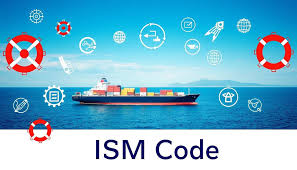Maritime Safety Management Code (ISM Code) – Ensuring Compliance at Sea
The International Safety Management (ISM) Code is a critical part of maritime operations. Introduced by the International Maritime Organization (IMO), the ISM Code provides an international standard for the safe management and operation of ships and for pollution prevention. SEANAV supports shipping companies in complying with ISM Code requirements, offering safety audits, onboard inspections, document reviews, and compliance consultation.
What Is the ISM Code?
The ISM Code stands for International Safety Management Code. It applies to commercial ships and requires shipping companies to develop a Safety Management System (SMS). This system should include procedures for operating ships safely, protecting the environment, and managing risks. Additionally, the code ensures responsibilities are clearly defined between shore-based and shipboard personnel.

SEANAV’s ISM Code Compliance Support
SEANAV offers expert guidance in setting up and maintaining ISM-compliant systems. We perform internal audits, safety drills, and document inspections, ensuring that vessels meet SOLAS and IMO standards. Furthermore, we help create and implement safety procedures tailored to your ship’s specific type and trade.
Why ISM Code Compliance Matters
Compliance reduces accidents, promotes a culture of safety, and is legally required for many ship types. The code strengthens accountability within companies and improves emergency preparedness. Most importantly, it boosts the confidence of shipowners, crew, and regulatory bodies.
11 Frequently Asked Questions About the ISM Code
- 1. What does ISM Code stand for?
It stands for International Safety Management Code. - 2. Who enforces the ISM Code?
The International Maritime Organization (IMO) enforces it through flag states and classification societies. - 3. What ships require ISM certification?
All passenger ships and cargo ships over 500 GT involved in international voyages. - 4. What is a Safety Management System (SMS)?
It’s a structured framework of procedures that ensure safe ship operation and pollution prevention. - 5. How often are ISM audits required?
Internal audits are annual; external verification audits are every five years with intermediate checks. - 6. What role does the Designated Person Ashore (DPA) play?
The DPA ensures effective communication between ship and shore regarding safety issues. - 7. Is training required under the ISM Code?
Yes. Crew and shore staff must be trained in safety procedures and emergency response. - 8. Can SEANAV help write SMS manuals?
Absolutely. We assist in drafting customized and ISM-compliant Safety Management System manuals. - 9. What happens during an ISM audit?
The auditor reviews documents, inspects the ship, and interviews crew to verify compliance. - 10. What are the penalties for non-compliance?
Vessels may be detained, fined, or lose certification. Insurers may also refuse claims. - 11. How do I get started with compliance?
Contact SEANAV for a step-by-step guide and tailored support for your vessel.

In conclusion, the ISM Code is not just a regulatory obligation. It represents a proactive approach to safety and risk reduction. Partner with SEANAV for comprehensive ISM Code support, and keep your crew, vessel, and the marine environment protected.
Learn more about our marine safety audit services and how we assist clients in achieving maritime compliance.

